#Chen Ching Yang
Explore tagged Tumblr posts
Text




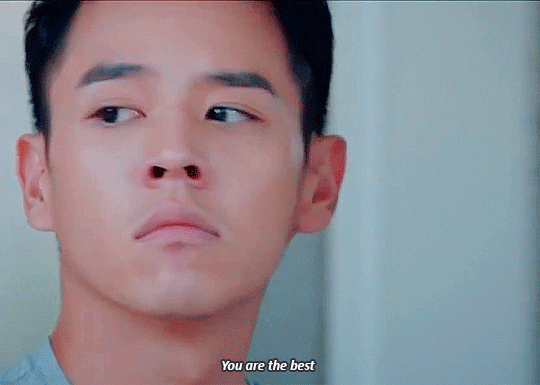





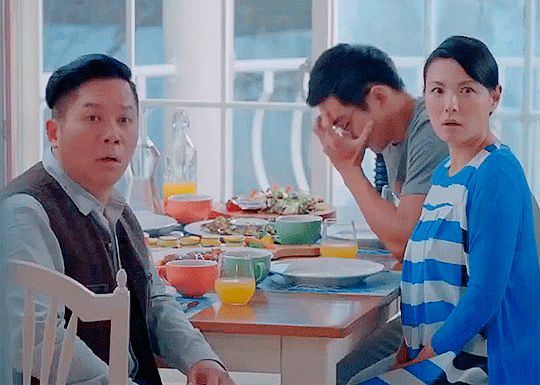

#Happy Together#Happy Together 2015#同樂會#Gabriel makes stuff#Sky Li#Alex#Chen Ching Yang#Benny#BennyAlex#Benny x Alex#Bruce He#Wang Bo Han#Taiwanese Drama#Taiwanese series#Taiwanese BL#Taiwan series#BL Drama#BL series
9 notes
·
View notes
Text



Cdrama: The Untamed (2019)
xue yang x wei wuxian (the untamed)
Watch this video on Youtube: https://www.youtube.com/shorts/_S2lB3D-Kaw
#The Untamed#陈情令#Grandmaster of Demonic Cultivation#The Founder of Diabolism#Mo Dao Zu Shi#MDZS#CQL#Chén Qíng Lìng#Chen Qing Ling#Chan Ching Ling#魔道祖师#陳情令#魔道祖師#2019#Tencent Video#WeTV#youtube#chinese drama#cdrama#short video#shorts#Xiao Zhan#Wei Wu Xian#Wei Ying#Wang Hao Xuan#Xue Yang
28 notes
·
View notes
Text
Interesting Papers for Week 25, 2025
Opponent control of reinforcement by striatal dopamine and serotonin. Cardozo Pinto, D. F., Pomrenze, M. B., Guo, M. Y., Touponse, G. C., Chen, A. P. F., Bentzley, B. S., Eshel, N., & Malenka, R. C. (2025). Nature, 639(8053), 143–152.
Emergence of a Dynamical State of Coherent Bursting with Power-Law Distributed Avalanches from Collective Stochastic Dynamics of Adaptive Neurons. Chan, L.-C., Kok, T.-F., & Ching, E. S. C. (2025). PRX Life, 3(1), 013013.
Fear conditioning modulates the intrinsic excitability of ventral hippocampal CA1 neurons in male rats. Ehlers, V. L., Yousuf, H., Smies, C. W., Natwora, B. R., & Moyer, J. R. (2025). Journal of Neurophysiology, 133(3), 853–867.
Separating cognitive and motor processes in the behaving mouse. Hasnain, M. A., Birnbaum, J. E., Ugarte Nunez, J. L., Hartman, E. K., Chandrasekaran, C., & Economo, M. N. (2025). Nature Neuroscience, 28(3), 640–653.
Neural mechanisms of learned suppression uncovered by probing the hidden attentional priority map. Huang, C., van Moorselaar, D., Foster, J., Donk, M., & Theeuwes, J. (2025). eLife, 13, e98304.3.
Robust encoding of stimulus��response mapping by neurons in visual cortex. Jonikaitis, D., Xia, R., & Moore, T. (2025). Proceedings of the National Academy of Sciences, 122(9), e2408079122.
Long-term memory facilitates spontaneous memory usage through multiple pathways. Kumle, L., Kovoor, J., Watt, R. L., Boettcher, S. E. P., Nobre, A. C., & Draschkow, D. (2025). Current Biology, 35(5), 1171-1179.e5.
Error prediction determines the coordinate system used for the representation of novel dynamics. Leib, R., & Franklin, D. (2025). eLife, 14, e84349.
Statistical learning re-shapes the center-surround inhibition of the visuo-spatial attentional focus. Massironi, A., Lega, C., Ronconi, L., & Bricolo, E. (2025). Scientific Reports, 15, 7656.
Hair Cells in the Cochlea Must Tune Resonant Modes to the Edge of Instability without Destabilizing Collective Modes. Momi, A. S., Abbott, M. C., Rubinfien, J., Machta, B. B., & Graf, I. R. (2025). PRX Life, 3(1), 013001.
Decision cost hypersensitivity underlies Huntington’s disease apathy. Morris, L.-A., Horne, K.-L., Manohar, S., Paermentier, L., Buchanan, C. M., MacAskill, M. R., Myall, D. J., Apps, M., Roxburgh, R., Anderson, T. J., Husain, M., & Le Heron, C. J. (2025). Brain, 148(3), 861–874.
Integration of Euclidean and path distances in hippocampal maps. Ottink, L., de Haas, N., & Doeller, C. F. (2025). Scientific Reports, 15, 7104.
Aversive generalization in human amygdala neurons. Reitich-Stolero, T., Halperin, D., Morris, G., Goldstein, L., Bergman, L., Fahoum, F., Strauss, I., & Paz, R. (2025). Current Biology, 35(5), 1137-1144.e3.
Compartmentalized dendritic plasticity in the mouse retrosplenial cortex links contextual memories formed close in time. Sehgal, M., Filho, D. A., Kastellakis, G., Kim, S., Lee, J., Shen, Y., Huang, S., Lavi, A., Fernandes, G., Davila Mejia, I., Martin, S. S., Pekcan, A., Wu, M. S., Heo, W. Do, Poirazi, P., Trachtenberg, J. T., & Silva, A. J. (2025). Nature Neuroscience, 28(3), 602–615.
Adaptive chunking improves effective working memory capacity in a prefrontal cortex and basal ganglia circuit. Soni, A., & Frank, M. J. (2025). eLife, 13, e97894.3.
Attention to memory content enhances single-unit spike sequence fidelity in the human anterior temporal lobe. Sundby, K. K., Vaz, A. P., Wittig, J. H., Jackson, S. N., Inati, S. K., & Zaghloul, K. A. (2025). Current Biology, 35(5), 1085-1094.e5.
Acetylcholine modulates prefrontal outcome coding during threat learning under uncertainty. Tu, G., Wen, P., Halawa, A., & Takehara-Nishiuchi, K. (2025). eLife, 13, e102986.2.
The effect of fasting on human memory consolidation. Yang, X., Miao, X., Schweiggart, F., Großmann, S., Rauss, K., Hallschmid, M., Born, J., & Lutz, N. D. (2025). Neurobiology of Learning and Memory, 218, 108034.
Neural Correlates of Perceptual Plasticity in the Auditory Midbrain and Thalamus. Ying, R., Stolzberg, D. J., & Caras, M. L. (2025). Journal of Neuroscience, 45(10), e0691242024.
Hippocampal neuronal activity is aligned with action plans. Zutshi, I., Apostolelli, A., Yang, W., Zheng, Z. S., Dohi, T., Balzani, E., Williams, A. H., Savin, C., & Buzsáki, G. (2025). Nature, 639(8053), 153–161.
#neuroscience#science#research#brain science#scientific publications#cognitive science#neurobiology#cognition#psychophysics#neurons#neural computation#neural networks#computational neuroscience
12 notes
·
View notes
Note
hi!! can u suggest me some fc's for father and brother of Lauren Tsai? And for Ju Jingyi too. Please!!
Father:
Hugo Weaving (1960) - has spoken up for Palestine!
Michael Stipe (1960) - has spoken up for Palestine!
Jackson Lou / Lou Xue Xian (1962) Taiwanese.
Kuo Tzu Chien (1964) Taiwanese.
Paco Tous (1964) - has spoken up for Palestine!
Leon Dai (1966) Taiwanese.
John Cusack (1966) - has spoken up for Palestine!
Richie Jen (1966) Taiwanese.
Wang Tzu Chiang (1967) Taiwanese.
Vincent Chiao (1967) Taiwanese.
Chu Chung Heng (1967) Taiwanese.
Yu An-shun (1967) Taiwanese.
Tsai Yueh Hsun (1968) Taiwanese.
Wu Bai (1968) Taiwanese.
Victor Huang (1971) Taiwanese.
Jacko Chiang (1972) Taiwanese.
Roger Fan (1972) Taiwanese.
Welly Yang (1973) Taiwanese.
Matthew Cooke (1973) - has spoken up for Palestine!
Brother:
Rhydian Vaughan (1988) Taiwanese / White.
Kamaal Williams (1989) Taiwanese / White - has spoken up for Palestine!
Bie Thassapak Hsu (1991) Taiwanese / Thai - half sibling!
Giullian Yao Gioiello (1992) Taiwanese / White.
YU / Yu Teng Yang (1995) Taiwanese / Japanese - half sibling!
Anson Chen (1996) Taiwanese / Vietnamese - half sibling!
Sub Urban / Daniel Virgil Maisonneuve (1999) Taiwanese / White.
Patrick Brasca (1999) Taiwanese / White.
And for Ju Jingyi:
Father:
Chen Daoming (1955) Chinese.
Ni Dahong (1960) Chinese.
Hua Liu (1961) Chinese.
Jiang Wen (1963) Chinese.
Bai Fan (1962) Chinese.
Feng Yuanzheng (1962) Chinese.
Liang Guanhua (1964) Chinese.
Hou Yong (1967) Chinese.
Evergreen Mak Cheung-ching (1968) Chinese.
Dong Yong (1968) Chinese.
Hu Jun (1968) Chinese.
Huang Zhizhong (1969) Chinese.
Liu Xiao Ling Tong (1959) Chinese.
Brother:
Jiang Chao (1991) Chinese.
Qin Junjie (1991) Chinese.
Merxat Yalkun (1991) Chinese.
Li Xian (1991) Chinese.
Gong Jun (1992) Chinese.
Sheng Yilun (1992) Chinese.
Huang Jingyu (1992) Chinese.
Elvis Han (1992) Chinese.
Ryan Cheng (1993) Chinese.
Hu Yitian (1993) Chinese.
Bai Jingting (1993) Chinese.
Chen Ruoxuan (1994) Chinese.
Li Wenhan (1994) Chinese.
Deng Wei (1995) Chinese.
Ding Yuxi (1995) Chinese.
Leo Sheng (1996) Chinese - is a trans man - has spoken up for Palestine!
Li Yunrui (1996) Chinese.
Chen Xingxu (1996) Chinese.
Bi Wen (1997) Chinese.
Guo Junchen (1997) Chinese.
If this has helped you in any way please consider donating to a Palestinian fund me and/or please consider reblogging content about Palestine if you haven't already!
8 notes
·
View notes
Text
Masterlist
All Songs
Spotify
Contestants are listed with the name they used during Girls Planet with most recent stage names and groups in parentheses. Any other groups or stage names are listed in the linked posts.
Kim Chaehyun (Chaehyun, Kep1er)
Huening Bahiyyih (Huening Bahiyyih, Kep1er)
Choi Yujin (Yujin, Kep1er)
Kim Dayeon (Dayeon, Kep1er)
Seo Youngeun (Youngeun, Kep1er)
Kang Yeseo (Yeseo, MADEIN)
Ezaki Hikaru (Hikaru, Kep1er)
Sakamoto Mashiro (Mashiro, MADEIN)
Shen Xiaoting (Xiaoting, Kep1er)
Kim Suyeon (Sheon, Billlie)
Guinn Myah (Myah, ODDYOUTH)
Fu Yaning (YENNY, Soloist)
Su Ruiqi (Sury, Soloist)
Kawaguchi Yurina (Kawaguchi Yurina, Soloist)
Kim Bora (Bora, Cherry Bullet [disbanded])
Nonaka Shana (Shana, LAPILLUS)
Wen Zhe (Wen Zhe, Hickey)
Huang Xingqiao (黄星侨 | Lorina, Soloist)
Chen Hsinwei (Chen Xinwei, Soloist)
Ikema Ruan (Ruan, Gen1es)
Nagai Manami
Kishida Ririka (Ririka, ILY:1)
Zhou Xinyu (Xinyu, tripleS)
May (May, Cherry Bullet [disbanded])
Kamimoto Kotone (Kotone, tripleS)
Cai Bing (Cai Yu Bing, KSGIRLS)
Xu Ziyin (徐紫茵 | Roada Xu, Soloist)
Kim Doah (Doah, Fanatics)
Liang Jiao (Liang Jiao, GNZ48 Team G, Nebulove)
Kubo Reina
Yoon Jia (Yoon Jia, mimiirose)
Li Yiman
Sakurai Miu (Miu, ME:I)
Jeong Jiyoon (Jiyoon, ICHILLIN')
Yang Zige
Kuwahara Ayana (Miri, RIRYDAY)
An Jeongmin (veanii, Soloist)
Wang Yale
Yamauchi Moana
Lee Hyewon
Zhang Luofei
Sakamoto Shihona
Kim Hyerim (Kim Hye Rim, Soloist)
Hsu Nientzu (Nien, tripleS)
Arai Risako
Huh Jiwon (Jiwon, Cherry Bullet [disbanded])
Chiayi (Chiayi, Fanatics)
Shima Moka
Choi Yeyoung (Yeyoung, Geenius)
Wu Tammy
Fujimoto Ayaka (Aya, VIGU)
Lee Chaeyun
Leung Cheukying
Hayase Hana (Hana, ILY:1)
You Dayeon (You Dayeon, Soloist)
Xia Yan (Xia Yan, Soloist)
Ito Miyu (MiU, MADEIN)
Kim Sein
Liang Qiao (Liang Qiao, GNZ48 Team Z, Nebulove)
Hayashi Fuko (Fuko, I-LAND2 N/a Contestant)
Sim Seungeun (Seungeun, BVNDIT [disbanded])
Xu Ruowei
Hiyajo Nagomi (Nagomi, ViV)
Lee Yeongyung
Gu Yizhou
Ando Rinka (Rinka, Veil)
Lee Rayeon (Rayeon, Fanatics)
Chang Ching (Rona, ILY:1)
Aratake Rinka (Aratake Rinka, Chuang Asia 2024 Contestant)
Lee Sunwoo (Lee Sunwoo, Universe Ticket Contestant)
Ma Yuling (Ma Yuling, SNH48 Team SII [graduated])
Okazaki Momoko (MOMOMETAL, BABYMETAL)
Kim Yeeun
Lin Chenhan
Inaba Vivienne
Lee Yunji (Ara, ILY:1)
Cui Wenmeixiu
Murakami Yume (Yume, LOVEONE)
Choi Hyerin (Choi Hyerin, Universe Ticket Contestant)
Chien Tzuling (Tzuling, ViV)
Kamikura Rei (Rei, Chuang Asia 2024 Contestant)
Ryu Sion (Sion, Geenius)
Ho Szeching (Szeching, UNi)
Terasaki Hina
Suh Jimin
Poon Wingchi
Okuma Sumomo
Joungmin
Lin Shuyun
Oki Fuka
Kim Yubin
Liu Shiqi
Kanno Miyu
Cho Haeun
Wang Qiuru (Wang Qiuru, SNH48 Team SII [graduated])
Kitajima Yuna
Han Dana (Dana, ViV)
Liu Yuhan
Nakamura Kyara
5 notes
·
View notes
Text
All Yin without Yang is weak
Yang without Yin is ridge
One Yin with nine Yang’s is a stick head
Two Yin’s with eight Yang’s becomes sporadic and scattered
Three Yin’s with seven Yang’s is dense
Four Yin’s with Six Yang’s is good
Five Yin’s with Five Yang’s is said to have the mysterious hands
The mysterious hands are a single action
The Tai Chi is after the action is completed
Yin and Yang are unbiaseded and called wonderful hands
Empty traces vanished into nothingness.
Yin-Yang poem. ~Chen Chung Ching
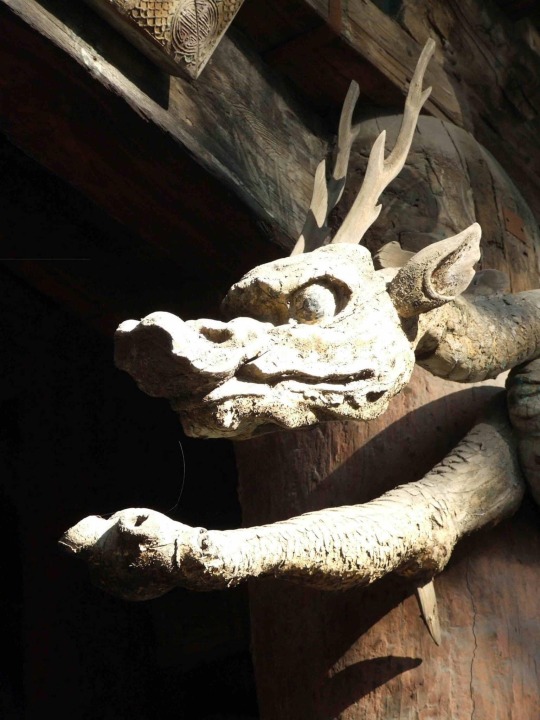
11 notes
·
View notes
Text
Animation Night 165: New Gods
嘿朋友动画的晚上正在上映电影!
One day I'll make a new friend who speaks Chinese and I can ask to come up with a different intro for donghua-related posts ;p
Long time Animation Night viewers might remember Animation Night 102 a little over a year ago, in which we watched a film called 新神榜:哪吒重生 (New Gods: Nezha Reborn) - not to be confused with other recent Nezha-related films like Ne Zha.
And it was pretty sick. Essentially you've got a CGI film set in a kind of FF7-like dieselpunk world in which various mythological figures now run crime syndicates or ride cool motorbikes. The film followed someone who turns out to be the reincarnation of Nezha - where Nezha's old enemy, the East Sea Dragon King, is also reincarnated as a kind of mafia kingpin who doesn't know to leave well enough alone, and picks a fight, hoping to stop the new Nezha fully incarnating.
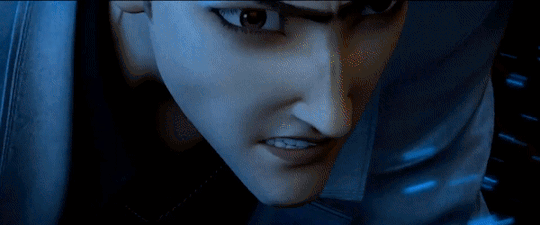
As CG films go, there's not a lot to compare it to - except perhaps Lupin III: The First, which also has the kind of smooth, slightly stylised figures and fancy effects. It was a bunch of fun, lots of twists and turns, guys who look like Sun Wukong but aren't (...maybe?), betrayals, and of course plenty of slickly choreographed fantastical martial arts.
Well, sure enough, Nezha was the first in a series! The second film in the series, New Gods: Yang Jian came out last year...
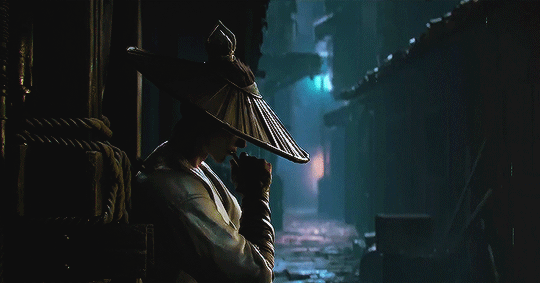
This one focuses on another character from the Investiture of the Gods, Erlang Shen (二郎神), who's got a bunch of other names, notably Yang Jian (楊戩), which is the name he takes in Investiture of the Gods. I definitely needed to read up on this guy, so here's a primer: Erlang Shen's a god, nephew to the Jade Emperor, and a rather righteous one, associated with traits like purity, decency, and slaying monsters. Physically, his major trait is the truth-seeing third eye in the middle of his forehead; he also likes to carry a three-pointed spear, and his signature technique is '72 eartly transformations', i.e. turning into pretty much anything.
In Investiture, he shows up as a discple of the immortal Yuding Zhenren (玉鼎真人) during Chapter 40, in which Jiang Ziya battles the four 'Diablo Brothers' Mo Lihong, Mo Liqing, Mo Lihai and Mo Lishou, essentially a bunch of evil wizards who are causing havoc. Now, bear with me here. Mo Lishou has a powerful flying mink (or maybe an elephant). Yang Jian deliberately lets himself get eaten, and then when Lishou sends the mink out to attack, he transforms inside its stomach, popping it from the inside as it's about to fight Jiang Ziya.
Then, Yang Jian transforms himself into the mink, and uses this disguise to get close to the brothers and steal a magic umbrella from Mo Lihong, giving Jiang Ziya the chance to win the battle. Pure TTRPG player strategems here honestly. Love it.
He also shows up in Journey to the West, in which he's sent to try and deal with the Sun Wukong problem. They have a classic transformation battle, which Yang Jian eventually wins by seeing through Sun Wukong's clever disguise as a temple, and teaming up with Laozi (yeah¸ the Tao Te Ching guy) to capture him.
All in all, Yang Jian is not a god to be trifled with.

However, the main story about Erlang Shen/Yang Jian is none of these, but a folktale called The Magic Lotus Lantern, in which he plays the role of antagonist.
The Magic Lotus Lantern tells of the goddess Huayue Sanniang, who falls in love with a mortal scholar called Lui Yanchang. Her older brother Erlang Shen, here a god, does not approve, to the point that he's willing to fight her about it. However, Huayue Sanniang wins the fight using her magic lotus lantern, and marries Liu Yanchang. Together they have a child called Chen Xiang. With me so far?
Unfortunately, Erlang Shen isn't about to take this whole thing lying down. After seven years, he tracks them down by the light of that same lantern, and briefly abducts Chen Xiang, before stealing the lantern and sealing Sanniang under a mountain (Mount Hua).
Nine years later, Chen Xiang - now 16 - learns what happened to his mum. He goes on a journey running into a number of mythological figures, including Sun Wukong, who teaches him martial arts. Indeed, Sun Wukong is like you know what kid you're pretty strong, I'll make you a big old axe to get your mum out of that mountain. At the end of it all, Chen Xiang goes and battles his uncle, and loses... but at the last minute he gets a special lotus lantern powerup, which gives him the chance to win the battle and free his mum from the mountain.
youtube
Incidentally, if you will permit a tangent (that is at least animation relevant lmao) - this story was adapted to animation in 1999 as 宝莲灯 (Lotus Lantern), and in fact that's quite a notable film in itself. To briefly tell the story again, from the 50s onwards, the vast majority of animation in China happened under the roof of Shanghai Animation Film Studio. However, during the Cultural Revolution, most of the major animators at SAFS such as Te Wei were cast as reactionaries sent to the countryside to do hard labour, practicing drawing only in secret. Chinese animation entered a period where the only permitted form was propaganda films in a narrowly defined realist style.
Following the end of the Cultural Revolution, many of these animators returned to the studio, making celebrated films like 哪吒闹海 Nezha Conquers the Dragon King (1979) as well as all sorts of short films celebrating an end to their ordeal and railing against artistic censorship. However, the studio's output - and Chinese animation in general - declined in the ensuing decades, with Chinese studios mostly doing outsourcing work and younger audiences turning to anime and western animation. So far so familiar.
In 1992, the studio started to reorganise itself along Western lines, collaborating with a company called Prrfect Animation from San Francisco. [This information comes from an article in Animation World Network, which is incredibly light on details. I can't find any other mention of Prrfect Animation outside of its connection with SAFS.] The studio would soon become part of the new Shanghai Film Group Corporation.
And in the middle of that period comes this movie - a kind of turning point for donghua. You can a restoration on Youtube, albeit unsubbed. Visually it's definitely got traces of the Cultural Revolution-era style, narratively it hews fairly close to the Mouse's formula complete with songs; indeed, allegedly this movie beat them at their own game in 1999.
Anyway, we're not watching this movie tonight - vibeswise it would be a weird combo, and it's going to take a little work to find suitable subs and mux them in, but put a pin in this, we might just come back to it.

So what about this film? In this world, Yang Jian is now living a quiet life as a bounty hunter. Here's the official English-language plot summary, which is very brief:
Twelve years after imprisoning his sister underneath a mountain, Erlang Shen, a god known for his all-seeing third eye, now works as a bounty hunter. A woman hires him and his crew to prevent his nephew, Chenxiang, from obtaining a magical lotus lantern that holds great power.
Beyond that? I can tell you that at some point he wears a fedora. Look, it's in that gif right there. Yeah, I'm flying a little blind on this one ^^'
As things turned out, I didn't end up seeing this at Annecy, since it clashed with Rintarō's new short film... but fortunately, it is now available in the usual places. So the plan tonight is pretty simple: we will be watching both New Gods films, first a reprise of Nezha and then the new Yang Jian.
Also! We're actually on time! I'm gonna go live a lot earlier than we've managed lately, namely 8pm UK time, which is about 3 hours from this post (if you're in the States, that will be midday Pacific time, 3pm Eastern time). The place is, as ever, twitch.tv/canmom. Hope to see you there~
20 notes
·
View notes
Text
SC digesa siasat Peguam ‘Scammer’ Kington Tong ‘Cuci duit’ Kasino Macao Kelvin Tan & Mafia Korporat China dalam Jetson Berhad

ini mengenai tindakan peguam ‘Scammer’ Kington Tong Kum Loong yang bukan sahaja bersekongkol dengan Mafia Korporat Chong Loong Men budak Victor Chin beliau juga menggunakan individu, ahli perniagaan dan Mafia Korporat China ‘mencuci’ dana haram melabur di syarikat senaraian awam di negara ini
Satu syarikat yang pasti ialah AGILE GROUP HOLDINGS LIMITED adalah sebuah syarikat pelaburan yang terlibat dalam pembangunan hartanah dan operasi hotel di Republik Rakyat China (RRC). Agile sebelum ini pernah diambil tindakan pihak berkuasa bagi pelaburan melibatkan kepentingan keluarga lembaga pengarahnya.
Di Malaysia anak syarikat mereka ialah Agile Real Estate Development (M) Sdn Bhd. Pemegang sejuta saham syarikat ini ialah Mafia Korporat Hongkong, Mindway Limited. Ahli Lembaga Pengarahnya ialah Chai Weng Kai (CEO), Chen Zhuo Lin dan skandal Peguam Kington, Miss Zhao Yan Ji.
[BACA DI SINI- Peguam ‘Scammer’ Kington dan Skandal Miss Zhao Yanji ‘cuci’ duit Mafia Korporat China di Jetson Berhad
Kington berjaya memasukkan skandalnya Miss Zhao Yanji menjadi ahli Lembaga Pengarah di Kumpulan Jetson dan kini berusaha untuk membawa Chai Keng Wai CEO Agile Real Estate Development (M) Sdn Bhd sebagai Pengarah Urusan dengan gaji yang lumayan dan Pengarah Kumpulan Jetson Berhad. Namun setakat ini masih gagal.


Sekitar Mei dan Jun Kington Tong Kum Long melakukan cubaan manipulasi saham dengan membeli saham seberapa banyak dalam Kumpulan Jetson Berhad. Di atas kertas Kington Tong Kum Long antara pemegang saham individu terbesar iaitu melebihi 27 peratus kepentingan atau 74,029, 800 saham langsung atau tidak langsung.
Pembelian Kington Tong Kum Loong berterusan setiap hari sebelum EGM melonjakkan saham Kumpulan Jetson 42 sen pada 12 Jun sebelum jatuh kembali kepada 33 sen pada 13 jun. Kington meraih untung dari kenaikan harga saham dan tahu dia rugi selepas itu maka dia juga menjual sahamnya pada 13 jun . Harga saham Jetson sehingga 20 Jun kekal jatuh 27 sen.

Selain ‘Money Laundering’ cuci wang syarikat China, AGILE GROUP HOLDINGS LIMITED melalui anak syarikatnya di Malaysia, Agile Real Estate Development (M) Sdn Bhd diketuai Chai Keng Wai didapati Kington Tong Kum Long juga menggunakan nama-nama lain termasuk syarikat judi China untuk memanipulasi saham Kumpulan Jetson.
Antara yang dikenal pasti ialah Kelvin Tan Hai Ching Naib Presiden Pemasaran Antarabangsa pengendali kasino Macau Melco Crown Entertainment Ltd. Kelvin juga merupakan Naib Presiden Eksekutif untuk Sands China Ltd pada 2015 hingga sekarang. Perniagaan ‘Gambling’ adalah makanannya.

Kelvin Tan menggunakan dana-dana judi haram ini untuk melabur di Malaysia dalam syarikat senarai awam seperti Kumpulan Jetson Berhad atau mana-mana yang disyor oleh Kington Tong Kum Loong dan firmanya.
1 note
·
View note
Text
Yin & Young Podcast EP 75: Eight Years in Review
youtube
Looking back at these past eight years of Yin & Young, we have grown so much. In this episode we reflect back on what has changed and what has stayed the same—exploring the past, how it informs the present, and how we might move into the future. Thank you everyone for these past eight years!
Highlights:
00:00:00 Intro: Taking a look back at 8 years of Yin & Young, starting in 2016.
00:01:45 Trump back in office and Trump supporters. Episode 2: Election Blues was recorded and posted shortly after Trump was inaugurated for his first term.
00:09:33 The rights of private companies, Elon Musk, and free speech.
00:15:47 Politics: Tariffs, how to reach young men, campaign messaging (Trump, Warren, Yang), and lessons from Star Trek.
00:27:48 The bird singing is James' pet Java sparrow Ming Ming.
00:28:27 Healthcare, taxes, individualism (U.S.) vs collectivism (Japan).
00:35:01 Causes of death U.S. vs Japan vs World.
00:40:50 Looking back at past episodes: a shift in tone from casual dating to how to maintain a relationship.
00:44:04 How to deal with boredom and doubt in a relationship.
00:47:03 Episode 20: Seng Chen: "I want to hear myself when I suffer."
00:51:41 My Own Worst Enemy - getting in your own way, sexual regret, and being better.
00:55:34 Episode 36: Don't just settle. Where James was and where he is now.
00:57:59 Discussed our most popular episode so far, Episode 28 with Teo Yoo. Also chatted about movies and musicals (Past Lives, Wicked, The South Park Movie, Book of Mormon).
01:04:02 Reflecting on Yin & Young the Podcast so far.
01:06:44 Martial Arts: Choy Li Fut, Brazilian Jiu-Jitsu, Taichi, Baji. Exercises: Yi Jin Jing, Zhan Zhuang.
01:09:54 *Correction: Yi Jin Jing (易筋經) is linked to Bodhidharma, not the Book of Changes (I Ching 易經).
01:14:04 Outro: What matters.
———
Follow and connect with us on:
YouTube: https://www.youtube.com/@yinyoungpodcast
Instagram: https://www.instagram.com/yinyoungpodcast
Facebook: https://www.facebook.com/yinyoungpodcast
If you enjoyed this episode, please like and subscribe. It helps us continue doing this podcast and reach more people. Thank you!
Inquiries: yinyoungpodcast[at]gmail.com
0 notes
Note
Prompts para o panteão chinês? E mwm tbm, por favor.
FACECLAIMS — Bai JIngting, Chen Feiyu, Ding Yuxi, Drew Ray Tanner, Dong Sicheng, Dylan Wang, Eddie Liu, Gong Jun, Jeff Satur, Jing Boran, Lay Zhang, Lewis Tan, Lin Yi, Liu Yangyang, Liu Yuning, Luke Chen, Luo Yunxi, Song Jiyang, Song Wheilong, Wang Anyu, Wang Xingyue, Wang Yibo, Wang Zhuocheng, Wang Ziyi, Wei Zheming, Wen Junhui, Xiao Zhan, Xiaojun, Xu Minghao, Yang Yang, Yu Bin, Yu Shi, Zhang Chenxiao, Zhang Hao, Zhang Linghe, Zhu Yilong. Tive algumas ideias e mudei o gênero, mas podem ser utilizadas e adaptadas para qualquer personagem, fiquem à vontade. Desculpem pela demora!

Um filho de Chang’e cujo poder esteja no mundo dos sonhos. Toda vez que dorme, pode viajar pelo mundo onírico ou se projetar astralmente. No entanto, esse semideus está ficando um pouco errante e já não sabe o que é sonho e o que é o mundo real. Toda vez que adentra essa dimensão particular, acaba deixando uma parte de si.
Esse filho de Erlang Shen recebeu uma arma especial: ela fala com ele e o guia até tudo que está corrompido. Ele passou a caçar demônios, guiado por esse item, e assim parou em Nexum, onde se tornou um dos principais protetores da cidade. No entanto, sua arma não está satisfeita apenas com monstros, demônios e seres inferiores… Ela deseja sangue divino. Sangue de deus.
Invocando palavras e símbolos mágicos baseados nos trigramas do I Ching (ex: selar portas, criar campos protetores, alterar sorte), esse semideus filho de Fuxi é usuário de um tipo de magia muito poderoso, antigo e único. Ele atua como selador de criaturas, maldições e outros tipos de coisas, guiado unicamente por seu desejo de desafio. O desafio do momento é conseguir selar a Mácula em alguém, e ele está disposto a infectar até a si mesmo para tentar provar que consegue entender e selar essa doença também.
Um diplomata nascido de um símbolo da guerra: um filho de Guan Yu que tenta impedir conflitos com a mesma paixão com a qual o pai os enfrenta. Ele é tão pacificador que nem ao menos mata monstros e suas armas foram forjadas para serem soníferas invés de envenenadas, por exemplo.
Um filho de Guanyin que ganhou a habilidade de ouvir as preces direcionadas à sua mãe. Todas as vozes em sua mente acabaram lhe deixando um pouco insano, e agora ele está convencido de que matar os opressores é a única forma de libertar os oprimidos.
Um alquimista nato, esse filho de Huangdi busca a fórmula para o elixir da imortalidade desde que perdeu a mãe para uma doença terminal. Isso pode acabar com ele realizando algum pacto com alguma divindade. Esse pacto, apesar de torná-lo virtualmente imortal, também possui algumas consequências nas quais ele não pensou tanto assim, mas está se arrependendo e buscando formas de acabar com ele.
Uma filha de Jiutian Xuannü que, por muitos anos, serviu como espiã para a deusa — pode ter vários contextos: talvez para iniciar a localização de semideuses ‘rebeldes’, ou então localizada em posições políticas no mundo real. Especializada na arte da sedução e letal, ela se arrependeu de suas ações por algum motivo e decidiu abandonar essa posição, assim como a lealdade à mãe. Ganhou uma maldição, mas também uma passagem de ida para Nexum, onde terá de se entender com todos os que prejudicou em algum sentido.
Um filho adotado de Longmu que sente que precisa “provar” que é digno. Ele pode ter alguns poderes relacionados com mimetismo dracônico, mas nunca consegue sentir que é um dragão de verdade, o tornando cruel e muito crítico consigo mesmo.
Anteriormente apenas uma filha sereiana vivendo nos mares gelados de Mazu, sendo uma princesa entre as criaturas marinhas, agora essa semideusa se vê em Nexum após ter seu ecossistema devastado. Ela é meio Pequena Sereia, é a primeira vez que anda entre os humanos em terra firme em muito tempo.
Um semideus de Nezha que, de alguma forma, se infiltrou entre os deuses e conseguiu libertar alguém que não devia — talvez um Titã de outro panteão. Ele acredita que ninguém deveria ser preso e a liberdade deveria ser superior a todos, uma visão de mundo bem anárquica e caótica que o tornou meio paranoico e incapaz de criar raízes.
Essa semideusa filha de Nüwa nasceu com a habilidade de ver “rachaduras” em tudo: pessoas, lugares, emoções, objetos, relações… Ela tenta consertar tudo com sua segunda habilidade de gerar uma espécie de argila espiritual, mas muitas vezes falha na missão. No passado, já curou alguém que causou muito — pode ser um semideus cruel, um Titã, ou até mesmo alguma criatura que destruiu um vilarejo depois. Carregando essa culpa, ela tenta ser mais cautelosa, mas não consegue ignorar o que vê.
Nascido de um resquício do corpo de Wukong na fornalha sagrada, esse semideuses vive com o corpo queimando por dentro — seu coração é literalmente fogo puro — e poderes incandescentes à beira do colapso. Ele vê o pai como brincalhão demais para compreender o fardo que carrega e geralmente o repudia. Você pode pensar na Karlach, de Baldur’s Gate, como uma inspiração visual.
Uma botânica filha de Yandi Shennongshi que cultiva ervas em seu próprio corpo, no melhor estilo Hera Venenosa. No entanto, quando passa muito tempo sem colhê-las, as plantas ameaçam dominar seu corpo e tomar sua mente — estilo um vírus Cordyceps de TLOU.
Esse semideus filho de Yanluo morreu, mas seu pai o recusou no Submundo. Ele caminha entre mundos como um morto-vivo, nem vivo e nem morto, com total consciência de que sua alma — e corpo — estão começando a apodrecer.
Esse semideus foi adotado por Yue Lao devido uma incrível inteligência emocional e tem a habilidade de “cortar” ou enfraquecer linhas relacionais, interrompendo relações. Mas, após alguma situação que abala seu juízo, ele corta sem querer sua linha com os próprios pais, as pessoas mais importantes de sua vida.
1 note
·
View note
Photo

Following a month-long retrospective in March of one of the movement’s most beloved filmmakers –Cannes 2000 Best Director winner Edward Yang (Yi Yi) – the BFI continues its deep dive into one of East Asian cinema’s most remarkable filmmaking movements this April with Myriad Voices: Reframing Taiwan New Cinema. Spearheaded in the early 80s by young directors like Yang and Hou Hsiao-hsien, the Taiwan New Cinema movement found a new generation of filmmakers striving to tell authentic tales of quotidian life amidst rapid urbanisation and growth in Taiwan. Rejecting blockbuster melodramas and Hong Kong martial fantasies, this new wave emphasised social realism, aesthetic richness, and the foregrounding of ordinary, working-class individuals to striking effect. The result was a naturalistic and deeply human brand of storytelling that would resonate far beyond Taiwan’s borders. “It captured a very special period in 80s Taiwan in terms of modernity, cosmopolitanism and internationalism,” says programmer Hyun Jin Cho, who feels that the films’ “exceptional” and contemporary visuals have underpinned their enduring appeal. The progressive foregrounding of women’s stories and long-running collaborations with talented female writers and performers, meanwhile, is a core focus of the BFI’s new season – which goes beyond the movement’s most celebrated and world-renowned works to showcase highlights lesser-known in the UK. Aided by insight from programmer Cho – as well as directors Chen Kun-hou and Huang Yu-shan – Dazed unpacks the mercurial film programme below, exploring the timeless and nostalgic allure of Taiwan New Cinema. One of the headline works of the BFI’s new season is undoubtedly Hou Hsiao-hsien’s A City of Sadness. The winner of the Venice Golden Lion in 1989, this profound historical drama was the first Taiwanese film to achieve a major international honour – a symbolic triumph for the wider filmmaking collective, says Cho, that channels many of the elements they had set out to explore at the start. Despite its considerable significance in bringing Taiwanese cinema to global attention, the film has been largely unavailable in the decades since its release. The timing of this new restoration is poignant: Hou’s family announced his retirement from filmmaking in late 2023 after being diagnosed with Alzheimer’s. Set in the 40s following the end of World War Two, and told through the eyes of a humble family, A City of Sadness tells the story of Taiwan’s painful transformation under the new Chinese Nationalist government following half a century of Japanese rule. As intellectuals bemoan newfound corruption and widespread unemployment, innocent men like deaf-mute photographer Lin Wen-ching (Tony Leung) are targeted by the Kuomintang in a period of widespread political repression. As the first film to openly allude to the ‘February 28 Incident’ of 1947 – which resulted in thousands of civilian deaths, and led to decades of repression now known as the ‘White Terror’ – A City of Sadness was a watershed production in Taiwanese filmmaking; it debuted only two years after the martial law imposed in the film was lifted. Methodically executed via fixed-angle long-takes, and mostly confined to a domestic setting, this “intimate epic” is full of “richness and detail in the very small moments,” says Cho. “Two extremely talented filmmakers led the movement, and their film language is quite exceptional,” says Cho. If one of those is Hou Hsiao-hsien, the other is undoubtedly Edward Yang, a “maverick” former computer engineer recognised for masterpieces A Brighter Summer Day (1991) and Yi Yi (2000), both of which are widely considered among the greatest films of all time. “He’s such a humanist,” says Cho, who describes how Yang always believed that the story and characters should dictate the filmmaking style – and not the opposite. “He just wanted the story to speak, with a deep empathy,” she says. “He always said his films are a love letter to his friends, and that intimacy is there in every film.” Yang sadly died in 2007, leaving behind seven stunning features, one anthology short, and one TV film (Duckweed). Of this limited canon, the visually stunning Taipei Story serves as a testament to the movement’s highly collaborative nature. Out Of The Blue (Film Still) So brightly have the films of Yang and Hou burned on the international stage that wider New Taiwan Cinema treasures have long been overshadowed. Out of the Blue came just a year after Chen Kun-hou won Best Feature and Best Director for Growing Up at the Golden Horse Awards (the ‘Oscars’ of Chinese-language cinema) – and is one of a clutch of precious gems receiving their European premieres via the BFI’s new programme. Co-written by Hou and long-time collaborator Chu Tʽien-wen (Taipei Story; A City of Sadness), Out of the Blue is a mellow tale of a 17-year-old student who, while striving to meet the expectations of his strict parents in school, begins romancing a beautiful girl on a trip to the coast – only for her to disappear shortly thereafter. As the film flows at a glacial pace, fixed shots of dusty baseball fields, lapping waves, and boxy TVs in cramped apartments linger, inviting introspection as eyes are drawn to pastel-coloured clothes, and ears to the ambient sounds of the city. “It was the only time in my 60-year career that I made a film I truly wanted to make,” Chen tells Dazed, describing this modest work as one he “truly adores”. “I’d always wondered if I could create a film with minimal dialogue, using only emotions and affects on-screen. I endeavoured to let these drive the progression of the storyline, approaching an unacceptable incident with calmness, tolerance and understanding.” My Favourite Season (Film Still) “He’s very gentle and warm, but quite softly radical in the ways he thinks about female bodies,” says Cho of director Chen. This empathetic quality is shown vividly in My Favourite Season, a luminous, gender-subverting romantic drama that charms while delivering an effective critique of the patriarchy. Starring legendary Taiwanese screen icon Sylvia Chang (That Day, On the Beach), the movie follows beautiful young professional Liu, the only “girl” in her family, who defies all expectations to carve out a career in the big city – only to leave her job after an affair with her married boss. Headstrong, she decides to keep their unborn child but seeks a new husband so that her baby can inherit a paternal surname (and avoid the social stigma of illegitimacy) – “after that, I will divorce,” she states clearly. Contract in hand, Liu enters a short-term marriage of convenience with Bi (Jonathan Lee), an affable softie with thick-rimmed glasses, several tiny exotic pets, and an unfortunate tendency to leave his keys in his car. But as this transactional couple keep up appearances – strolling through flower meadows and palm-lined villages in the countryside – their companionship blossoms, hinting at a light dilemma to come. Director Chen Kun-hou was the cinematographer who brought much visual shine to Hou Hsiao-hsien’s early work, including the multi-director anthology film The Sandwich Man, and coming-of-age drama The Boys From Fengkuei (both 1983). The Boys From Fengkuei follows a group of Taiwanese lads from the small fishing settlement of Penghu as they set off for bustling Kaohsiung in search of work and girls. And in its emphasis on fixed long-shots and sumptuous natural environments, this “important turning point in Hou’s film career” establishes much of the style that would become his signature in the years to come. Chen was instrumental in that. “The cinematography must create a distinct contrast between lifestyles in the two locations,” Chen tells Dazed. He emphasises how his use of light and shadow helped compose their distinct characteristics: “The sunlight in Penghu appears pale and high-contrast, and even at dusk, the sky stays bright. The essence of life here feels desolate and faint.” In Kaohsiung, meanwhile: “We filmed on streets filled with crowds of people, with the vast cityscape visible from high-rise buildings. They envisioned the potential for future development here, where the dreams of success and wealth were within reach.” Celebrating its UK premiere on the 40th anniversary of its Taiwanese release is the crowning achievement of Chang Yi – a director lesser known in the West but instrumental in the rise of New Taiwan Cinema. He is particularly significant for his championing of women-centred stories, and his collaborations with female writers (like his then-wife Hsiao Sa). Chang was one of the four first-time filmmakers whose vignettes comprised the 1982 anthology In Our Time – a production widely regarded as the movement’s starting point that also marked the debut of Edward Yang. Full of exquisitely composed shots capturing joyous gatherings, quiet confrontations, and intimate pledges between members of a downtrodden family, Kuei-Mei tells the story of a woman facing hardship after marrying a gambling-addicted widower in mid-century Taiwan. Told across 30 years via humble homesteads, commercial kitchens and noisy textile factories, it’s a tale of quiet resilience in a conservative society, where the ambition of opening a humble local restaurant feels like an almost unattainable dream. Autumn Tempest (Film Still) Huang Yu-shan’s romantic drama Autumn Tempest was planned as a 30-minute short, but when acclaimed Korean actress Kang Soo-yeon joined the production it was expanded into a full feature (she’d won the top acting prize at Venice the previous year for The Surrogate Woman). The story of a city boy sent to a countryside temple to bury himself in his studies – only to fall in love with a beautiful woman named Su-pi –ended up being a box office hit in Taiwan; it’s never been screened in the West until now. More than simple melodrama, Autumn Tempest foregrounds the country’s evolving modernity and internationalism: student Wen-hsiang, arriving from a Taipei dominated by neon signs and noisy pachinko parlours, sings Stevie Wonder in the shower and bemuses temple patrons with his Nescafé instant coffee (“It’s so bitter! Like Chinese medicine!” one woman winces). But it’s also notable for its progressive depiction of womanhood—which prompted widespread media discussion on ideas of the body and sexuality ahead of release, thereby ramping up public interest, recalls the director. “This story emphasises women’s autonomy over their bodies,” Huang tells Dazed, highlighting how Su-pi’s “inner longings and awareness as a woman” challenged deeply rooted societal beliefs relating to child-bearing as the ultimate goal of marriage. The director, who later founded the feminist Women Make Waves film festival, later summarised the movie’s symbolism in an article titled ‘Sex, Buddha, and Wind’. These three elements, she says, represent the primal desires, traditional social norms, and disruptive environmental forces that intertwine to form the film’s dramatic core. Myriad Voices: Reframing Taiwan New Cinema is running throughout April 2025 at London’s BFI !function (f, b, e, v, n, t, s) if (f.fbq) return; n = f.fbq = function () n.callMethod ? n.callMethod.apply(n, arguments) : n.queue.push(arguments) ; if (!f._fbq) f._fbq = n; n.push = n; n.loaded = !0; n.version = '2.0'; n.queue = []; t = b.createElement(e); t.async = !0; t.src = v; s = b.getElementsByTagName(e)[0]; s.parentNode.insertBefore(t, s) (window, document, 'script', ' fbq('init', '357833301087547'); fbq('track', "PageView"); Source link
0 notes
Text




#Happy Together#Happy Together 2015#同樂會#Gabriel makes stuff#Sky Li#Alex#Chen Ching Yang#Benny#BennyAlex#Benny x Alex#Taiwanese Drama#Taiwanese series#Taiwanese BL#Taiwan series#BL Drama#BL series
8 notes
·
View notes
Text




youtube






Cdrama: The Untamed (2019)
Xue Yang and Xiao Xingchen || Flying Apsaras (fmv)
Watch this video on Youtube: https://www.youtube.com/watch?v=F1Cx-5P7MbM






#The Untamed#陈情令#Grandmaster of Demonic Cultivation#The Founder of Diabolism#Mo Dao Zu Shi#MDZS#CQL#Chén Qíng Lìng#Chen Qing Ling#Chan Ching Ling#魔道祖师#陳情令#魔道祖師#2019#Tencent Video#WeTV#youtube#chinese drama#cdrama#short video#shorts#Wang Hao Xuan#Xue Yang#Song Ji Yang#Xiao Xing Chen#Youtube
5 notes
·
View notes
Photo

Following a month-long retrospective in March of one of the movement’s most beloved filmmakers –Cannes 2000 Best Director winner Edward Yang (Yi Yi) – the BFI continues its deep dive into one of East Asian cinema’s most remarkable filmmaking movements this April with Myriad Voices: Reframing Taiwan New Cinema. Spearheaded in the early 80s by young directors like Yang and Hou Hsiao-hsien, the Taiwan New Cinema movement found a new generation of filmmakers striving to tell authentic tales of quotidian life amidst rapid urbanisation and growth in Taiwan. Rejecting blockbuster melodramas and Hong Kong martial fantasies, this new wave emphasised social realism, aesthetic richness, and the foregrounding of ordinary, working-class individuals to striking effect. The result was a naturalistic and deeply human brand of storytelling that would resonate far beyond Taiwan’s borders. “It captured a very special period in 80s Taiwan in terms of modernity, cosmopolitanism and internationalism,” says programmer Hyun Jin Cho, who feels that the films’ “exceptional” and contemporary visuals have underpinned their enduring appeal. The progressive foregrounding of women’s stories and long-running collaborations with talented female writers and performers, meanwhile, is a core focus of the BFI’s new season – which goes beyond the movement’s most celebrated and world-renowned works to showcase highlights lesser-known in the UK. Aided by insight from programmer Cho – as well as directors Chen Kun-hou and Huang Yu-shan – Dazed unpacks the mercurial film programme below, exploring the timeless and nostalgic allure of Taiwan New Cinema. One of the headline works of the BFI’s new season is undoubtedly Hou Hsiao-hsien’s A City of Sadness. The winner of the Venice Golden Lion in 1989, this profound historical drama was the first Taiwanese film to achieve a major international honour – a symbolic triumph for the wider filmmaking collective, says Cho, that channels many of the elements they had set out to explore at the start. Despite its considerable significance in bringing Taiwanese cinema to global attention, the film has been largely unavailable in the decades since its release. The timing of this new restoration is poignant: Hou’s family announced his retirement from filmmaking in late 2023 after being diagnosed with Alzheimer’s. Set in the 40s following the end of World War Two, and told through the eyes of a humble family, A City of Sadness tells the story of Taiwan’s painful transformation under the new Chinese Nationalist government following half a century of Japanese rule. As intellectuals bemoan newfound corruption and widespread unemployment, innocent men like deaf-mute photographer Lin Wen-ching (Tony Leung) are targeted by the Kuomintang in a period of widespread political repression. As the first film to openly allude to the ‘February 28 Incident’ of 1947 – which resulted in thousands of civilian deaths, and led to decades of repression now known as the ‘White Terror’ – A City of Sadness was a watershed production in Taiwanese filmmaking; it debuted only two years after the martial law imposed in the film was lifted. Methodically executed via fixed-angle long-takes, and mostly confined to a domestic setting, this “intimate epic” is full of “richness and detail in the very small moments,” says Cho. “Two extremely talented filmmakers led the movement, and their film language is quite exceptional,” says Cho. If one of those is Hou Hsiao-hsien, the other is undoubtedly Edward Yang, a “maverick” former computer engineer recognised for masterpieces A Brighter Summer Day (1991) and Yi Yi (2000), both of which are widely considered among the greatest films of all time. “He’s such a humanist,” says Cho, who describes how Yang always believed that the story and characters should dictate the filmmaking style – and not the opposite. “He just wanted the story to speak, with a deep empathy,” she says. “He always said his films are a love letter to his friends, and that intimacy is there in every film.” Yang sadly died in 2007, leaving behind seven stunning features, one anthology short, and one TV film (Duckweed). Of this limited canon, the visually stunning Taipei Story serves as a testament to the movement’s highly collaborative nature. Out Of The Blue (Film Still) So brightly have the films of Yang and Hou burned on the international stage that wider New Taiwan Cinema treasures have long been overshadowed. Out of the Blue came just a year after Chen Kun-hou won Best Feature and Best Director for Growing Up at the Golden Horse Awards (the ‘Oscars’ of Chinese-language cinema) – and is one of a clutch of precious gems receiving their European premieres via the BFI’s new programme. Co-written by Hou and long-time collaborator Chu Tʽien-wen (Taipei Story; A City of Sadness), Out of the Blue is a mellow tale of a 17-year-old student who, while striving to meet the expectations of his strict parents in school, begins romancing a beautiful girl on a trip to the coast – only for her to disappear shortly thereafter. As the film flows at a glacial pace, fixed shots of dusty baseball fields, lapping waves, and boxy TVs in cramped apartments linger, inviting introspection as eyes are drawn to pastel-coloured clothes, and ears to the ambient sounds of the city. “It was the only time in my 60-year career that I made a film I truly wanted to make,” Chen tells Dazed, describing this modest work as one he “truly adores”. “I’d always wondered if I could create a film with minimal dialogue, using only emotions and affects on-screen. I endeavoured to let these drive the progression of the storyline, approaching an unacceptable incident with calmness, tolerance and understanding.” My Favourite Season (Film Still) “He’s very gentle and warm, but quite softly radical in the ways he thinks about female bodies,” says Cho of director Chen. This empathetic quality is shown vividly in My Favourite Season, a luminous, gender-subverting romantic drama that charms while delivering an effective critique of the patriarchy. Starring legendary Taiwanese screen icon Sylvia Chang (That Day, On the Beach), the movie follows beautiful young professional Liu, the only “girl” in her family, who defies all expectations to carve out a career in the big city – only to leave her job after an affair with her married boss. Headstrong, she decides to keep their unborn child but seeks a new husband so that her baby can inherit a paternal surname (and avoid the social stigma of illegitimacy) – “after that, I will divorce,” she states clearly. Contract in hand, Liu enters a short-term marriage of convenience with Bi (Jonathan Lee), an affable softie with thick-rimmed glasses, several tiny exotic pets, and an unfortunate tendency to leave his keys in his car. But as this transactional couple keep up appearances – strolling through flower meadows and palm-lined villages in the countryside – their companionship blossoms, hinting at a light dilemma to come. Director Chen Kun-hou was the cinematographer who brought much visual shine to Hou Hsiao-hsien’s early work, including the multi-director anthology film The Sandwich Man, and coming-of-age drama The Boys From Fengkuei (both 1983). The Boys From Fengkuei follows a group of Taiwanese lads from the small fishing settlement of Penghu as they set off for bustling Kaohsiung in search of work and girls. And in its emphasis on fixed long-shots and sumptuous natural environments, this “important turning point in Hou’s film career” establishes much of the style that would become his signature in the years to come. Chen was instrumental in that. “The cinematography must create a distinct contrast between lifestyles in the two locations,” Chen tells Dazed. He emphasises how his use of light and shadow helped compose their distinct characteristics: “The sunlight in Penghu appears pale and high-contrast, and even at dusk, the sky stays bright. The essence of life here feels desolate and faint.” In Kaohsiung, meanwhile: “We filmed on streets filled with crowds of people, with the vast cityscape visible from high-rise buildings. They envisioned the potential for future development here, where the dreams of success and wealth were within reach.” Celebrating its UK premiere on the 40th anniversary of its Taiwanese release is the crowning achievement of Chang Yi – a director lesser known in the West but instrumental in the rise of New Taiwan Cinema. He is particularly significant for his championing of women-centred stories, and his collaborations with female writers (like his then-wife Hsiao Sa). Chang was one of the four first-time filmmakers whose vignettes comprised the 1982 anthology In Our Time – a production widely regarded as the movement’s starting point that also marked the debut of Edward Yang. Full of exquisitely composed shots capturing joyous gatherings, quiet confrontations, and intimate pledges between members of a downtrodden family, Kuei-Mei tells the story of a woman facing hardship after marrying a gambling-addicted widower in mid-century Taiwan. Told across 30 years via humble homesteads, commercial kitchens and noisy textile factories, it’s a tale of quiet resilience in a conservative society, where the ambition of opening a humble local restaurant feels like an almost unattainable dream. Autumn Tempest (Film Still) Huang Yu-shan’s romantic drama Autumn Tempest was planned as a 30-minute short, but when acclaimed Korean actress Kang Soo-yeon joined the production it was expanded into a full feature (she’d won the top acting prize at Venice the previous year for The Surrogate Woman). The story of a city boy sent to a countryside temple to bury himself in his studies – only to fall in love with a beautiful woman named Su-pi –ended up being a box office hit in Taiwan; it’s never been screened in the West until now. More than simple melodrama, Autumn Tempest foregrounds the country’s evolving modernity and internationalism: student Wen-hsiang, arriving from a Taipei dominated by neon signs and noisy pachinko parlours, sings Stevie Wonder in the shower and bemuses temple patrons with his Nescafé instant coffee (“It’s so bitter! Like Chinese medicine!” one woman winces). But it’s also notable for its progressive depiction of womanhood—which prompted widespread media discussion on ideas of the body and sexuality ahead of release, thereby ramping up public interest, recalls the director. “This story emphasises women’s autonomy over their bodies,” Huang tells Dazed, highlighting how Su-pi’s “inner longings and awareness as a woman” challenged deeply rooted societal beliefs relating to child-bearing as the ultimate goal of marriage. The director, who later founded the feminist Women Make Waves film festival, later summarised the movie’s symbolism in an article titled ‘Sex, Buddha, and Wind’. These three elements, she says, represent the primal desires, traditional social norms, and disruptive environmental forces that intertwine to form the film’s dramatic core. Myriad Voices: Reframing Taiwan New Cinema is running throughout April 2025 at London’s BFI !function (f, b, e, v, n, t, s) if (f.fbq) return; n = f.fbq = function () n.callMethod ? n.callMethod.apply(n, arguments) : n.queue.push(arguments) ; if (!f._fbq) f._fbq = n; n.push = n; n.loaded = !0; n.version = '2.0'; n.queue = []; t = b.createElement(e); t.async = !0; t.src = v; s = b.getElementsByTagName(e)[0]; s.parentNode.insertBefore(t, s) (window, document, 'script', ' fbq('init', '357833301087547'); fbq('track', "PageView"); Source link
0 notes
Photo

Following a month-long retrospective in March of one of the movement’s most beloved filmmakers –Cannes 2000 Best Director winner Edward Yang (Yi Yi) – the BFI continues its deep dive into one of East Asian cinema’s most remarkable filmmaking movements this April with Myriad Voices: Reframing Taiwan New Cinema. Spearheaded in the early 80s by young directors like Yang and Hou Hsiao-hsien, the Taiwan New Cinema movement found a new generation of filmmakers striving to tell authentic tales of quotidian life amidst rapid urbanisation and growth in Taiwan. Rejecting blockbuster melodramas and Hong Kong martial fantasies, this new wave emphasised social realism, aesthetic richness, and the foregrounding of ordinary, working-class individuals to striking effect. The result was a naturalistic and deeply human brand of storytelling that would resonate far beyond Taiwan’s borders. “It captured a very special period in 80s Taiwan in terms of modernity, cosmopolitanism and internationalism,” says programmer Hyun Jin Cho, who feels that the films’ “exceptional” and contemporary visuals have underpinned their enduring appeal. The progressive foregrounding of women’s stories and long-running collaborations with talented female writers and performers, meanwhile, is a core focus of the BFI’s new season – which goes beyond the movement’s most celebrated and world-renowned works to showcase highlights lesser-known in the UK. Aided by insight from programmer Cho – as well as directors Chen Kun-hou and Huang Yu-shan – Dazed unpacks the mercurial film programme below, exploring the timeless and nostalgic allure of Taiwan New Cinema. One of the headline works of the BFI’s new season is undoubtedly Hou Hsiao-hsien’s A City of Sadness. The winner of the Venice Golden Lion in 1989, this profound historical drama was the first Taiwanese film to achieve a major international honour – a symbolic triumph for the wider filmmaking collective, says Cho, that channels many of the elements they had set out to explore at the start. Despite its considerable significance in bringing Taiwanese cinema to global attention, the film has been largely unavailable in the decades since its release. The timing of this new restoration is poignant: Hou’s family announced his retirement from filmmaking in late 2023 after being diagnosed with Alzheimer’s. Set in the 40s following the end of World War Two, and told through the eyes of a humble family, A City of Sadness tells the story of Taiwan’s painful transformation under the new Chinese Nationalist government following half a century of Japanese rule. As intellectuals bemoan newfound corruption and widespread unemployment, innocent men like deaf-mute photographer Lin Wen-ching (Tony Leung) are targeted by the Kuomintang in a period of widespread political repression. As the first film to openly allude to the ‘February 28 Incident’ of 1947 – which resulted in thousands of civilian deaths, and led to decades of repression now known as the ‘White Terror’ – A City of Sadness was a watershed production in Taiwanese filmmaking; it debuted only two years after the martial law imposed in the film was lifted. Methodically executed via fixed-angle long-takes, and mostly confined to a domestic setting, this “intimate epic” is full of “richness and detail in the very small moments,” says Cho. “Two extremely talented filmmakers led the movement, and their film language is quite exceptional,” says Cho. If one of those is Hou Hsiao-hsien, the other is undoubtedly Edward Yang, a “maverick” former computer engineer recognised for masterpieces A Brighter Summer Day (1991) and Yi Yi (2000), both of which are widely considered among the greatest films of all time. “He’s such a humanist,” says Cho, who describes how Yang always believed that the story and characters should dictate the filmmaking style – and not the opposite. “He just wanted the story to speak, with a deep empathy,” she says. “He always said his films are a love letter to his friends, and that intimacy is there in every film.” Yang sadly died in 2007, leaving behind seven stunning features, one anthology short, and one TV film (Duckweed). Of this limited canon, the visually stunning Taipei Story serves as a testament to the movement’s highly collaborative nature. Out Of The Blue (Film Still) So brightly have the films of Yang and Hou burned on the international stage that wider New Taiwan Cinema treasures have long been overshadowed. Out of the Blue came just a year after Chen Kun-hou won Best Feature and Best Director for Growing Up at the Golden Horse Awards (the ‘Oscars’ of Chinese-language cinema) – and is one of a clutch of precious gems receiving their European premieres via the BFI’s new programme. Co-written by Hou and long-time collaborator Chu Tʽien-wen (Taipei Story; A City of Sadness), Out of the Blue is a mellow tale of a 17-year-old student who, while striving to meet the expectations of his strict parents in school, begins romancing a beautiful girl on a trip to the coast – only for her to disappear shortly thereafter. As the film flows at a glacial pace, fixed shots of dusty baseball fields, lapping waves, and boxy TVs in cramped apartments linger, inviting introspection as eyes are drawn to pastel-coloured clothes, and ears to the ambient sounds of the city. “It was the only time in my 60-year career that I made a film I truly wanted to make,” Chen tells Dazed, describing this modest work as one he “truly adores”. “I’d always wondered if I could create a film with minimal dialogue, using only emotions and affects on-screen. I endeavoured to let these drive the progression of the storyline, approaching an unacceptable incident with calmness, tolerance and understanding.” My Favourite Season (Film Still) “He’s very gentle and warm, but quite softly radical in the ways he thinks about female bodies,” says Cho of director Chen. This empathetic quality is shown vividly in My Favourite Season, a luminous, gender-subverting romantic drama that charms while delivering an effective critique of the patriarchy. Starring legendary Taiwanese screen icon Sylvia Chang (That Day, On the Beach), the movie follows beautiful young professional Liu, the only “girl” in her family, who defies all expectations to carve out a career in the big city – only to leave her job after an affair with her married boss. Headstrong, she decides to keep their unborn child but seeks a new husband so that her baby can inherit a paternal surname (and avoid the social stigma of illegitimacy) – “after that, I will divorce,” she states clearly. Contract in hand, Liu enters a short-term marriage of convenience with Bi (Jonathan Lee), an affable softie with thick-rimmed glasses, several tiny exotic pets, and an unfortunate tendency to leave his keys in his car. But as this transactional couple keep up appearances – strolling through flower meadows and palm-lined villages in the countryside – their companionship blossoms, hinting at a light dilemma to come. Director Chen Kun-hou was the cinematographer who brought much visual shine to Hou Hsiao-hsien’s early work, including the multi-director anthology film The Sandwich Man, and coming-of-age drama The Boys From Fengkuei (both 1983). The Boys From Fengkuei follows a group of Taiwanese lads from the small fishing settlement of Penghu as they set off for bustling Kaohsiung in search of work and girls. And in its emphasis on fixed long-shots and sumptuous natural environments, this “important turning point in Hou’s film career” establishes much of the style that would become his signature in the years to come. Chen was instrumental in that. “The cinematography must create a distinct contrast between lifestyles in the two locations,” Chen tells Dazed. He emphasises how his use of light and shadow helped compose their distinct characteristics: “The sunlight in Penghu appears pale and high-contrast, and even at dusk, the sky stays bright. The essence of life here feels desolate and faint.” In Kaohsiung, meanwhile: “We filmed on streets filled with crowds of people, with the vast cityscape visible from high-rise buildings. They envisioned the potential for future development here, where the dreams of success and wealth were within reach.” Celebrating its UK premiere on the 40th anniversary of its Taiwanese release is the crowning achievement of Chang Yi – a director lesser known in the West but instrumental in the rise of New Taiwan Cinema. He is particularly significant for his championing of women-centred stories, and his collaborations with female writers (like his then-wife Hsiao Sa). Chang was one of the four first-time filmmakers whose vignettes comprised the 1982 anthology In Our Time – a production widely regarded as the movement’s starting point that also marked the debut of Edward Yang. Full of exquisitely composed shots capturing joyous gatherings, quiet confrontations, and intimate pledges between members of a downtrodden family, Kuei-Mei tells the story of a woman facing hardship after marrying a gambling-addicted widower in mid-century Taiwan. Told across 30 years via humble homesteads, commercial kitchens and noisy textile factories, it’s a tale of quiet resilience in a conservative society, where the ambition of opening a humble local restaurant feels like an almost unattainable dream. Autumn Tempest (Film Still) Huang Yu-shan’s romantic drama Autumn Tempest was planned as a 30-minute short, but when acclaimed Korean actress Kang Soo-yeon joined the production it was expanded into a full feature (she’d won the top acting prize at Venice the previous year for The Surrogate Woman). The story of a city boy sent to a countryside temple to bury himself in his studies – only to fall in love with a beautiful woman named Su-pi –ended up being a box office hit in Taiwan; it’s never been screened in the West until now. More than simple melodrama, Autumn Tempest foregrounds the country’s evolving modernity and internationalism: student Wen-hsiang, arriving from a Taipei dominated by neon signs and noisy pachinko parlours, sings Stevie Wonder in the shower and bemuses temple patrons with his Nescafé instant coffee (“It’s so bitter! Like Chinese medicine!” one woman winces). But it’s also notable for its progressive depiction of womanhood—which prompted widespread media discussion on ideas of the body and sexuality ahead of release, thereby ramping up public interest, recalls the director. “This story emphasises women’s autonomy over their bodies,” Huang tells Dazed, highlighting how Su-pi’s “inner longings and awareness as a woman” challenged deeply rooted societal beliefs relating to child-bearing as the ultimate goal of marriage. The director, who later founded the feminist Women Make Waves film festival, later summarised the movie’s symbolism in an article titled ‘Sex, Buddha, and Wind’. These three elements, she says, represent the primal desires, traditional social norms, and disruptive environmental forces that intertwine to form the film’s dramatic core. Myriad Voices: Reframing Taiwan New Cinema is running throughout April 2025 at London’s BFI !function (f, b, e, v, n, t, s) if (f.fbq) return; n = f.fbq = function () n.callMethod ? n.callMethod.apply(n, arguments) : n.queue.push(arguments) ; if (!f._fbq) f._fbq = n; n.push = n; n.loaded = !0; n.version = '2.0'; n.queue = []; t = b.createElement(e); t.async = !0; t.src = v; s = b.getElementsByTagName(e)[0]; s.parentNode.insertBefore(t, s) (window, document, 'script', ' fbq('init', '357833301087547'); fbq('track', "PageView"); Source link
0 notes
Video
vimeo
The 59th Golden Horse Awards|Nominations|最佳改編劇本 from Bito on Vimeo.
The 59th Golden Horse Awards|Nominations
Designed by Bito
Creative Director|Keng-Ming Liu Art Director|Weahao Shao Project Manager|Wen-Hui Chen Account Manager|Naiyun Peng
Ideation|Weahao Shao Styleframe|Weahao Shao, RouJia Liang, Chin-Ho Kao, Boris Hsieh, Lu-Wen Hou, Joe Yang, Derrick Liu, Binbin Lu 3D Animation|Weahao Shao, RouJia Liang, Chin-Ho Kao, Boris Hsieh, Henry Chen, Yen Ke 2D Animation|Johnny Yang, Binbin Lu, Pei-Hsuan Wang, Cheng Li Feng
【Film Production】 Director|Weahao Shao DOP|Joe Yang Producer|Wen-Hui Chen, Wei-Ni Chen Special Effect Makeup Artist|Elsie Wang Talents|Hsien Chen Tsai, Chin-Ho Kao, Wei-Ni Chen, Boris Hsieh, Chung Chieh Yang, Liao Ching Wen, Hwang Sih Yu, Hao Che, Eric Hong, Chen Man Li Equipment|Chung Chieh Yang, Hsiang Hsieh, Chen Ying Shan, Marbo Wu, Tunhsueh Liang Editor|Weahao Shao, Joe Yang, Yeh Po Hsiu BTS|RouJia Liang, Chin-Ho Kao
Music|Luming Lu Sound Design|Hsiao-Chin Lin, Szu-Yu Lin Production Assistant|Li-Chin Chang Mixing|Hsiao-Chin Lin (WinSound Studio) Coordinator|Elisa, Yi-Hsin Lin
Voiceover|Morning Tzu-Yi Mo Recording Studio|V-Sound Music
0 notes